[Herald Interview] Gates Foundation, UN acknowledge Korea’s school farm in Kenya
‘Students were eating only one meal a day, but that has changed’
By Kim Yon-sePublished : Feb. 21, 2019 - 16:47
JEONJU, North Jeolla Province -- A well-known pundit in the local agriculture sector has stepped down in 2008 from his decades-long workplace -- Rural Development Administration. The senior official’s retirement 11 years ago was his new beginning for the underprivileged as a social contribution.
“One out of every four people in Kenya lives each day with less than $1,” said Kim Choong-hoe, former director of the Korea Program on International Agriculture, Kenya Center.
Kim reeled off his KOPIA activities story during his meeting with The Korea Herald in Jeonju at the state-run agency’s headquarters. He returned home in early 2019 after residing in East Africa for more than five years.
“One out of every four people in Kenya lives each day with less than $1,” said Kim Choong-hoe, former director of the Korea Program on International Agriculture, Kenya Center.
Kim reeled off his KOPIA activities story during his meeting with The Korea Herald in Jeonju at the state-run agency’s headquarters. He returned home in early 2019 after residing in East Africa for more than five years.
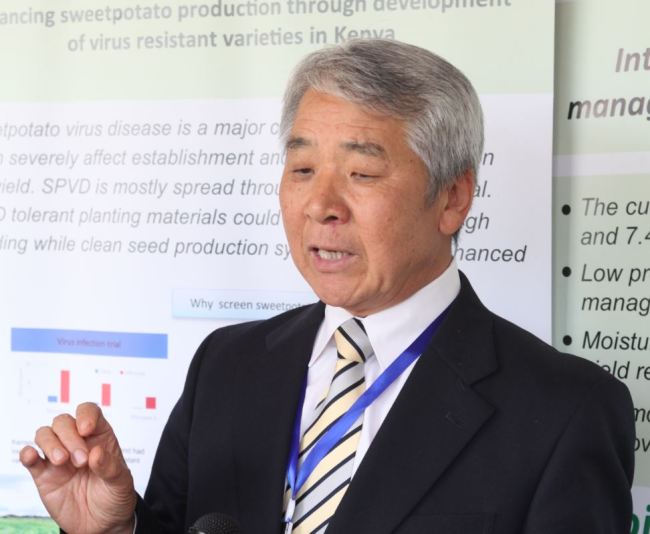
The average life span of Kenyans stands at just 57.8 years (the world’s 186th) based on those who were born in 2018 (while that of South Koreans comes to 83 years, the world’s 3rd). Moreover, 77 percent of the Kenyan people are engaged in farming. The population of the two countries is quite similar -- 52.2 million for Kenya and 51.8 million for Korea.
Data from KOPIA, a mutual cooperation & sustainable development project of the RDA, showed that agricultural products’ contribution to Kenya’s gross domestic product reached 23.1 percent. But Kim said he was shocked by the surrounding situation and scarcity of food when he embarked on the KOPIA director post.
“Students there were having only one meal a day,” he said.
Kim, in coordination with KOPIA staff, composed of seven Koreans and six locals, established an Education School Farm by reclaiming a 2-hectare unused land around an elementary school, located west of Nairobi. “It was a project to teach students how to fish rather than just giving them fish.”
There were no farming classes in the school, in an agriculture-oriented country. Kim, in person, taught the sixth- and seventh-grade students, aged around 12-14 years, farming technology at Kandeng’wa Primary School by introducing a class a week.
The KOPIA staff enabled students to eat the products they harvested from the school farm for lunch, and take the remaining food home to share with their families. Kim’s instruction of “how to fish” was a big success.
“Since then, the number of students avoiding school without notice fell sharply, as there was easily available food. As a result, their average school grades improved naturally,” he said. “Later, lower grade students also called for participation in the farming class.”
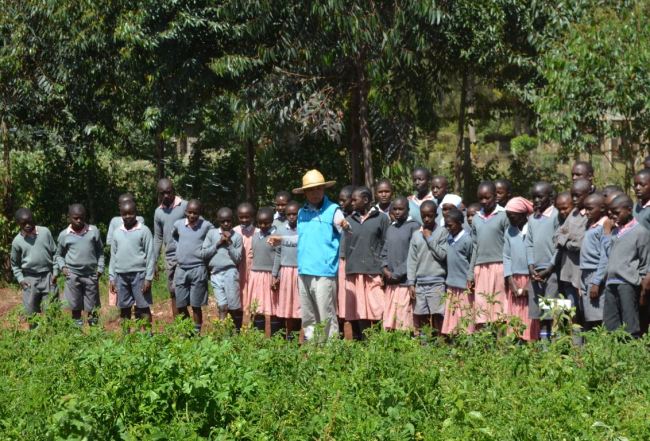
Products included corn, potato, sweet potato, cabbage and tomato. Additionally, or more significantly, the Kenyan students learned how to raise poultry at the KOPIA-initiated classes.
As consumer prices of chickens were quite high in the nation, a poultry farm established in the school farm drew wide attention from their parents and other ordinary residents.
Kim expressed his hope that the students will contribute to regional income level after graduation by making the best of their experience, which involves basic farming theory and on-the-spot experience.
For adult residents, Kim’s team fostered three model villages, which were dubbed new community movement – like the Saemaeul Movement in Korea in the 1970s.
They include Karai village in the Kiambu district, Mbiuni in Machakos and Wanjohi in Nyandarua. Through the movement between January 2016 and December, the villages could have the capacity for self-sufficiency in chicken-raising or potato-production.
KOPIA provided them with high-quality seed potatoes and chickens and appropriate farm skills, with the village residents seeing their incomes raised drastically. A noteworthy point is that the residents began making a bank deposit in addition to selling products in markets. No people in the villages were making bank savings before the movement, according to KOPIA data.
“The soil of Kenya was barren. In dry season, particularly, it was a desperate situation as there is no water underground,” Kim said. His center pushed for cultivating the infertile lands with residents by constructing irrigation facilities.
It was a project as part of the Official Development Assistance like the school farm case. Kim reiterates it was not a simple assistance with Korean funds, saying, “We have seen the residents’ income surge by sixfold, ninefold and 12-fold (from the initial stage).”
The Kenya center targeted to raise income as it would improve their livelihood. “In the wake of backward kitchen facilities, Kenya posts one of the highest rates of lung diseases.”
In fact, some of the model village residents could revamp kitchens, which block toxic gases, on the back of their growing income from crop production.
“The major crop and staple food of Kenyans is corn. Nonetheless, the self-sufficiency ratio for corns still stays at 70 percent,” he said. “The rest 30 percent is dependent on imports. The percentage has yet to change through our alternative suggestions (to the Kenyan authority).”
Kim focused on poultry raising to somewhat offset the high cost of corn imports. He prioritized improvement in chicken-raising infrastructure in three villages. “About 80 percent of the Kenyan farmers are experienced in poultry raising, which takes up 2 percent of the nation’s GDP.”
His remarks indicate that small hold farmers across the nation might be able to see a sharp growth in income through developed skills.
Kim evaluates Kenya is one of the few countries with high-growth potential in Africa noting that “shipments are delivered to neighboring countries such as Uganda, Tanzania and South Sudan via Mombasa Port. The country is the de facto hub of East Africa and its citizens are also fluent in English.”
The number of visitors to the KOPIA Kenya Center has continued to grow since 2015, including many college and high school students and adults from other regions.
In the first 10 months of 2018, more than 5,000 students in the country visited the center and its “education school farm.” South Korea’s Prime Minister Lee Nak-yon also visited the center last July, while some international charity organizations have recently expressed interest.
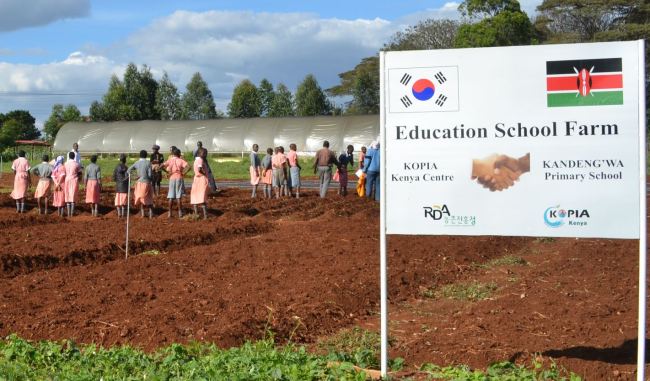
KOPIA has received suggestions from the United Nations Children’s Fund and the Bill & Melinda Gates Foundation on ways to expand the school farm program to the entire continent, Kim noted.
“They were farming only looking up in the sky without irrigation skills. Through an overhaul, Kenya could possibly become a powerful agricultural country. There are future export destinations like the Middle East and Europe.”
On the day for the interview, Kim was making a presentation on his five-year story in front of his former colleagues at the RDA headquarters. The Kenya unit led by the outgoing director won the top prize among the 21 KOPIA centers worldwide during the annual gathering, held on Feb. 12.
According to his colleagues and juniors, Kim has been asked to publish a book on his African experience in the form of cartoons for students at home and abroad. He will enjoy spring with his family for the first time in six years.
[Profile of Kim Choong-hoe]
2013-2018 Director of KOPIA Kenya Center
1979-2008 Research fellow at Rural Development Administration
1986 Agriculture doctorate at Louisiana State University
1972 Bachelor of agriculture at Seoul National University
1948 Born in Seoul
By Kim Yon-se (kys@heraldcorp.com)









![[Kim Seong-kon] Democracy and the future of South Korea](http://res.heraldm.com/phpwas/restmb_idxmake.php?idx=644&simg=/content/image/2024/04/16/20240416050802_0.jpg&u=)



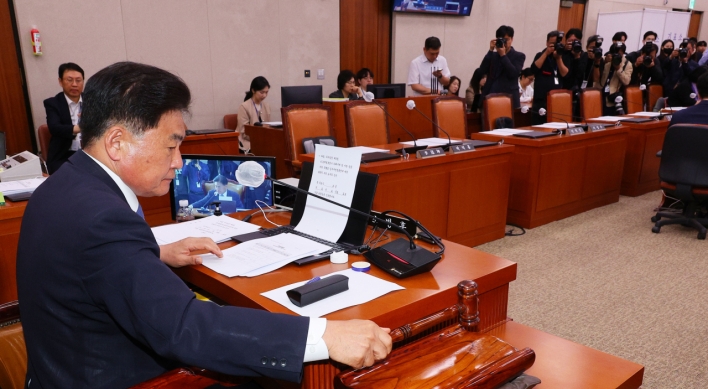

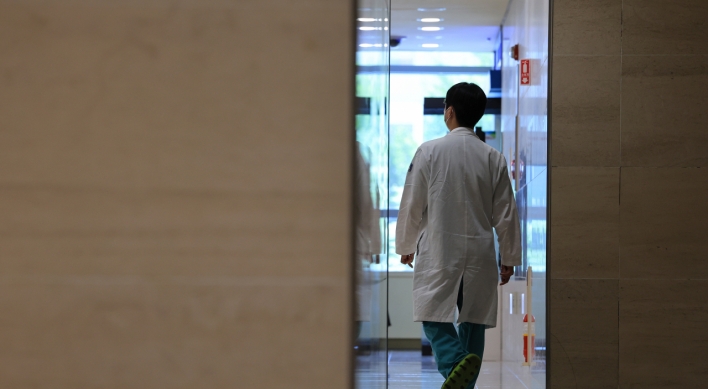


![[Today’s K-pop] Zico drops snippet of collaboration with Jennie](http://res.heraldm.com/phpwas/restmb_idxmake.php?idx=642&simg=/content/image/2024/04/18/20240418050702_0.jpg&u=)